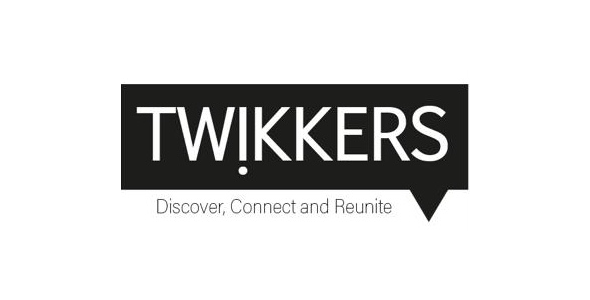Pharmacovigilance refers to the scientific and operational efforts involved in the detection, evaluation, understanding, and prevention of adverse drug reactions and other drug-related difficulties, which play an important role in ensuring drug safety and effectiveness. Nonetheless, the rapidly changing environment of healthcare and medicines has created numerous key obstacles for pharmacovigilance. Addressing these difficulties is critical to protecting public health and improving patient outcomes.
- Data Overload and Management
The management of large amounts of data collected from many sources is a major challenge for pharmacovigilance nowadays. The emergence of electronic health records (EHRs), wearable health devices, and multinational databases has resulted in an exponential increase in the number of data to be analyzed. This spike may overload traditional pharmacovigilance systems, complicating the detection and prioritization of possible safety signals. To navigate this complexity and extract useful insights from the data, robust data management and advanced analytical approaches are required.
- Regulatory Compliance and Harmonization
Pharmacovigilance operates under rigorous regulatory standards, which can differ markedly across various countries and regions. Achieving compliance with these varied regulations while ensuring a uniform approach to drug safety monitoring presents a significant challenge. Harmonizing global pharmacovigilance practices is essential to streamline processes and boost the effectiveness of drug safety initiatives within the field of drug regulatory affairs
- Signal Detection and Risk Assessment
Identifying and analyzing safety signals from a rapidly expanding data collection is a huge challenge. The high number of data can lead to both false positives and false negatives, confusing the distinction between actual safety concerns and irrelevant information. Furthermore, integrating data from multiple sources, such as clinical trials, post-marketing surveillance, and patient feedback, adds to the complexity. To improve accuracy and reduce the possibility of missing vital safety signals, improved signal identification algorithms and risk assessment frameworks are required.
- Integration of Real-World Evidence
The incorporation of real-world evidence (RWE) into pharmacovigilance practices offers both significant opportunities and notable challenges. RWE, which is sourced from real-world data such as patient registries, electronic health records, and insurance claims, can yield critical insights regarding drug safety and effectiveness across varied patient demographics. Nevertheless, the integration of RWE into established pharmacovigilance frameworks necessitates the resolution of issues pertaining to data quality, standardization, and interpretation. A primary challenge lies in developing methodologies that facilitate the effective incorporation of RWE while maintaining data reliability and relevance.
- Patient and Healthcare Professional Engagement
Involving patients and healthcare professionals in pharmacovigilance initiatives is crucial for obtaining a comprehensive understanding of safety data. However, the timely and accurate collection of adverse event reports from these groups can prove difficult. Challenges include a lack of awareness, inadequate training, and a hesitance to report incidents. Improving communication channels and enhancing educational initiatives to promote active involvement in pharmacovigilance can significantly enhance both the quality and volume of safety data gathered.
- Technological Advancements and Data Security
As technological innovations progress, pharmacovigilance systems must adapt accordingly. The implementation of advanced technologies, such as artificial intelligence (AI) and machine learning, presents opportunities for enhanced data analysis and signal detection. However, these advancements also introduce challenges concerning data security and privacy. It is imperative that pharmacovigilance systems adhere to data protection regulations while simultaneously harnessing technological advancements, making this a critical area of focus. Technological advancements are shaping the future of pharmacovigilance by enhancing data security and enabling more sophisticated safety monitoring systems.
- Resource Constraints
Effective pharmacovigilance activities necessitate considerable resources, including skilled personnel, technological infrastructure, and financial backing. Numerous organizations, particularly smaller pharmaceutical companies and regulatory agencies operating in low-resource environments, encounter limitations that hinder their capabilities in this domain.
At TechnoBridge, we take great pride in delivering best pharmacovigilance courses in Pune, meticulously designed to equip participants with extensive knowledge and practical experience in drug safety and risk management. Our well-structured programs encompass all essential elements of pharmacovigilance, such as signal detection, adherence to regulatory standards, and sophisticated data management methodologies. Whether you are embarking on your professional journey or looking to elevate your expertise, our courses provide a thorough curriculum tailored to the requirements of professionals at all stages of their careers. Join us in Pune to acquire practical insights, remain informed about industry developments, and refine your skills through the foremost pharmacovigilance training available. For those seeking the Best pharmacovigilance courses in Pune, TechnoBridge offers unparalleled quality and expertise to help you advance your career in drug safety.
Conclusion
The current challenges in pharmacovigilance illustrate the intricate nature of contemporary drug safety oversight within a progressively data-driven and regulated landscape. To tackle these challenges, a comprehensive strategy is essential, encompassing technological advancements, refined data management techniques, improved regulatory alignment, and increased involvement from stakeholders. By adeptly addressing these issues, the pharmacovigilance sector can persist in its mission to protect public health while improving the safety and effectiveness of medications.
